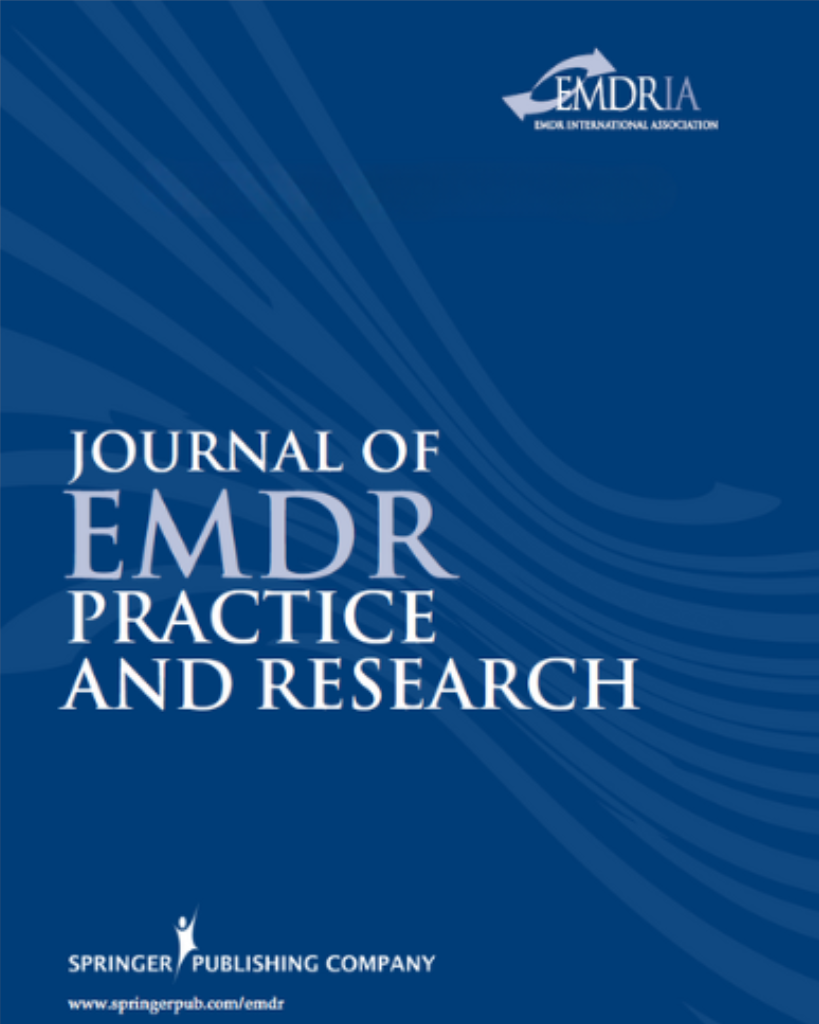Analyse et comparaison de discours de patients douloureux chroniques durant une thérapie de soutien par opposition à l’utilisation de la thérapie Eye Movement Desensitization and Reprocessing (EMDR)
[Dirscourse’s analysis and comparison of chronic pain patients during therapy as usual versus use of an Eye Movement Desensitization and Reprocessing (EMDR) therapy]
L’objectif principal de ce travail s’est alors attaché à comparer le discours des patients durant l’utilisation de la thérapie EMDR en comparaison avec une thérapie de soutien, dans une Unité hospitalière de prise en charge de la douleur chronique.
Article Abstract
“Introduction: L’utilisation de la thérapie EMDR – Eye Movement Desensitization and Reprocessing –, est novatrice dans le domaine de la douleur chronique. Si son efficacité tend à être démontré dans la littérature, son mode de fonctionnement diffère des psychothérapies classiques.
Objectif: L’objectif principal de ce travail s’est alors attaché à comparer le discours des patients durant l’utilisation de la thérapie EMDR en comparaison avec une thérapie de soutien, dans une Unité hospitalière de prise en charge de la douleur chronique.
Méthode: Quarante-cinq patients, répartis en trois groupes, ont alors bénéficié d’une prise en charge avec la thérapie EMDR (protocole standard), avec la thérapie EMDR (protocole douleur), ainsi qu’en thérapie de soutien. Tous les entretiens ont été retranscrits et analysés à l’aide du logiciel ALCESTE.
Résultats: Les résultats mettent en évidence que les classes sémantiques diffèrent entre les trois formes de thérapie, ainsi que la posture passive ou active du patient lors de la thérapie.
Conclusion: Ces résultats nous amènent des indications supplémentaires sur ce qui se passe in fine dans différents types de psychothérapies.”
[“Introduction: The use of EMDR – Eye Movement Desensitization and Reprocessing – being innovative in the area of chronic pain. If his efficiency as show in the specific litterature, the way its work it is really different than usual therapy.
Objective: The main objective of this work is to compare the speech of patients during the use of EMDR vs. supportive therapy in a supported unit of chronic pain to the hospital.
Methods: Forty-five patients divided into three groups received EMDR therapy (standard protocol), EMDR therapy (pain protocol) as well as supportive therapy. All interviews were transcribed and analyzed using the software Alceste.
Results: The results show that the semantic classes differ between the three forms of therapy, as well as passive or active posture of the patient during the therapy.
Conclusion: These results give us an additional insights into what happens in fine in different types of therapy.”]
—Description from publisher
Article Access
Open Access
Brennstuhl, M.-J., Bassan, F., & Tarquinio, C. (2019). Analyse et comparaison de discours de patients douloureux chroniques durant une thérapie de soutien par opposition à l’utilisation de la thérapie Eye Movement Desensitization and Reprocessing (EMDR). Pratiques Psychologiques, 25(4), 441-451. https://doi.org/10.1016/j.prps.2018.06.003
Date
December 1, 2019
Creator(s)
Marie-Jo Brennstuhl, Fanny Bassan, Cyril Tarquinio
Topics
Pain/Chronic Pain
Practice & Methods
Comparative Studies, Mechanisms of Action
Extent
11 pages
Publisher
Elsevier
Rights
© 2018 Société Française de Psychologie. Published by Elsevier Masson SAS. All rights reserved.
APA Citation
Brennstuhl, M.-J., Bassan, F., & Tarquinio, C. (2019). Analyse et comparaison de discours de patients douloureux chroniques durant une thérapie de soutien par opposition à l’utilisation de la thérapie Eye Movement Desensitization and Reprocessing (EMDR). Pratiques Psychologiques, 25(4), 441-451. https://doi.org/10.1016/j.prps.2018.06.003
Audience
EMDR Therapists, Other Mental Health Professionals
Language
French
Content Type
Article, Peer-Reviewed
Access Type
External Resource, Open Access




